中图分类号:S625 文献标志码:A 文章编号:1001-4330(2025)02-0426-10
0 引言
【研究意义】日光温室前屋面保温被性能直接影响日光温室的保温效果,分析保温被材料选用依据,对确定适合日光温室性价比和安全性的保温被内层材料有重要意义。【前人研究进展】Nahar等[对日光温室散热研究表明,日光温室通过围护结构散失的热量占日光温室热量总损失的2/3上下。日光温室能够在冬季连续生产,在于后墙白天蓄热,前屋面保温被夜间保温[2]。西北寒冷地区日光温室,夜间的热量损失中有7/10是由围护结构传热损失,其它3/10由冷风渗透损失。白天损失的热量中,也有约 6 5 % 是通过日光温室墙体、前屋面和后屋面损失的[3]。马承伟等[4]研究表明,通过围护结构的覆盖层保温被的热量散失是日光温室热损失的主要部分,约占总热损失的2/3。保温被材料多样随意,保温性难以保证。日光温室的前屋面是主要的散热面,日光温室与外界空气接触的各结构中,前屋面薄膜的传热系数最大,其所损失的热量约占热量总损失的 7 0 % ~ 8 0 % 。园艺设施覆盖材料保温被的传热损失通常约占其总热量损失的 7 5 % 以上,采用保温特性好的覆盖材料、加强覆盖材料的保温性是减少热量损失的最有效方法[6]。日光温室保温被的保温性能优劣直接影响日光温室的保温效果,在日光温室的保温措施中其重要性占首位[7]。【本研究切入点】日光温室的不同种覆盖材料的传热系数和传热阻的确定,简单方法是在实验室或生产日光温室直接测定[8-13],传热系数为最直接的性能指标。覆盖材料保温被的热工性是衡量园艺设施的保温性主要指标[14]。乔正卫等[15]研究也表明,保温被内芯材料的隔热性决定了日光温室覆盖物的保温性,而抗压抗拉性能取决于覆盖物表层材料的机械强度,该结论可为保温覆盖物作材料的选取和制作提供理论参考。【拟解决的关键问题】日光温室前屋面约占围护结构面积的 5 0 % ,夜晚保温被的保温性能对日光温室的热环境有至关重要的影响,覆盖材料保温被的传热损失占总热量损失的比例大,研究覆盖材料的保温性能,为选择保温被材料提供依据。
材料与方法
1.1材料
1. 1.1 保温被
以8类保温被为材料,测试其保温性能,测试地点在中国农业大学水利学院覆盖材料测试实验室。保温被的保温特性以传热系数来表征,保温被的传热系数可使用静态热箱测试法1测量。该测试法[]是在一维稳定传热的状态下,测定覆盖材料试件两侧的空气温度差和通过试件的热流量,再根据热流量求得覆盖材料的传热系数和传热阻等与保温性能有关的参数[18]
测试设备主体包括二个部分:热箱、冷箱,热箱模拟使用保温被的日光温室内温度,冷箱模拟室外环境,测试的覆盖材料试件铺于冷箱和热箱的交界面处(测试单层保温被)。图1
图1 静态热箱法示意[18]
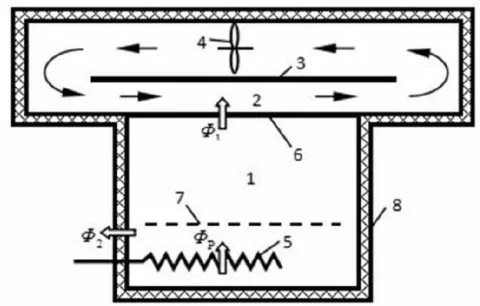
1. 1.2 仪器
测试仪器为覆盖材料保温性能测试台。每个
测试的现有保温被均裁剪 1 . 2 m × 1 . 2 m 的正方 形,平铺并粘贴在测试台上,每个粘贴边宽约0.1 m ,保温被试件传热面积为  左右。图2,图3
左右。图2,图3
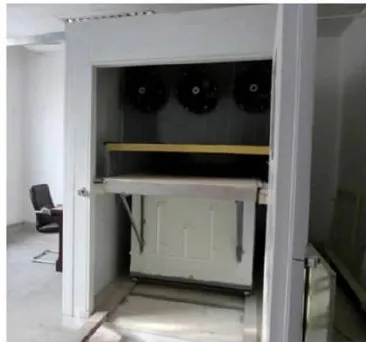 图2 覆盖材料保温性能测试台
图2 覆盖材料保温性能测试台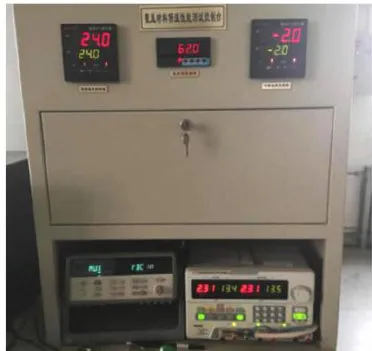 图3 覆盖材料保温性能测试控制台 Fig. 3 Covermaterialthermal insulationtestconsole
图3 覆盖材料保温性能测试控制台 Fig. 3 Covermaterialthermal insulationtestconsole1.2 方法
1.2. 1 试验设计
用作日光温室保温被内层材料(保温被与温室前屋面骨架接触的面为内层材料),主要有无纺布、涂银迷彩布、镀铝编织布和镀铝珍珠棉。中间材料(保温被中间的填充材料)主要有珍珠棉、布头棉、棉絮、保温棉、毛网卷和夹心棉,外层材料(保温被暴露在空气面为外层材料)主要有无纺布、涂银迷彩布、镀铝编织布、PE膜和镀铝珍珠棉(有防水性能,称作防水材料)。对市场上常用的8种30个内、中间、外层材料保温被进行压重厚度、重量、传热系数和传热阻测试。
1.2.2 保温被保温性能测试
日光温室覆盖材料性能测试台数据采集系统:热电偶测温电路、34972A数据采集仪、计算机及软件。
测试台运用软件MIGCM,VC编程,为测试专用。稳定点查询搜索过程约 3 ~ 4 h ,到冷箱和热箱加热功率一样时,稳定点才达热稳定状态,设定0 . 5 h 对点读数1次,该过程需  。控制程序按照设置的判断条件,如若判定测试系统达到热稳定,即自动转人传热系数测定。程序能自动测定传热系数和处理测试的结果、生成测试报表等内容。
。控制程序按照设置的判断条件,如若判定测试系统达到热稳定,即自动转人传热系数测定。程序能自动测定传热系数和处理测试的结果、生成测试报表等内容。
冷板温度:  ;冷箱空气的温度:- 4 ~ 0 % ,热箱内空气的温度:
;冷箱空气的温度:- 4 ~ 0 % ,热箱内空气的温度:  ;保温被外表面的气流速度:各个测点 ( 4 ± 0 . 8 ) m / s 和平均测值 ( 4 ± 0 . 2 ) m / s 。
;保温被外表面的气流速度:各个测点 ( 4 ± 0 . 8 ) m / s 和平均测值 ( 4 ± 0 . 2 ) m / s 。
日光温室覆盖材料传热和保温性能的测试方法原理,测试系统热稳定后才测试读数,测试也是热稳定过程的追踪监视,记录和采集数据。图4
2 结果与分析
2.1 8种内外层材料保温被测试
2. 1.1 测试中间珍珠棉和布头棉保温被
研究表明,中间材料为珍珠棉、外层材料是无纺布的保温被,传热系数和传热阻均在1左右。增加一层PE膜外层材料,传热阻减小,保温性能下降。增加镀铝编织布外层材料保温性能无变化。增加上下两层银迷彩布外层材料,传热阻增加,保温性能明显增加。
选择中间材料为珍珠棉保温被时,不选用增 加PE膜或镀铝编织布外层材料,因保温性能未 增加,成本却增加。增加两层银迷彩布外层材料 的保温被,选用中间材料为珍珠棉保温被,外层材 料用无纺布较佳。中间材料为珍珠棉的保温被重 量约  ,保温被较轻。表1,图5
,保温被较轻。表1,图5
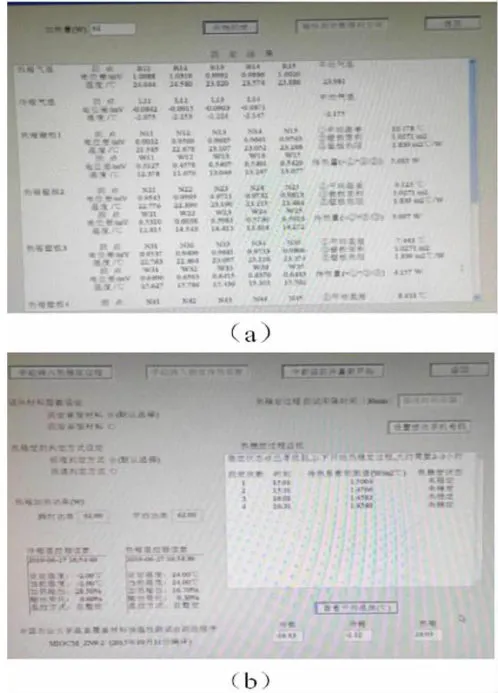 图4测试台热稳定过程监视Fig.4Monitoring of Thermal Stability ProcessofTestBench
图4测试台热稳定过程监视Fig.4Monitoring of Thermal Stability ProcessofTestBench 表1中间珍珠棉保温被测试Tab.1 Testingresultsofheatpreservationquilt
表1中间珍珠棉保温被测试Tab.1 Testingresultsofheatpreservationquilt2.1.2 中间是布头棉保温被的测试
研究表明,中间材料为布头棉、外层材料是无纺布的保温被,传热系数在  、传热阻在0.9
、传热阻在0.9  左右。增加花无纺布中间材料传热阻无显著变化。增加PE膜外层材料,传热阻小幅增加,保温性能稍有增加。增加镀铝编织布外层材料保温性能增加。增加花无纺布中间材料,且增加PE膜外层材料传热阻增加,保温性能显著增加。中间材料为布头棉的保温被重量约在
左右。增加花无纺布中间材料传热阻无显著变化。增加PE膜外层材料,传热阻小幅增加,保温性能稍有增加。增加镀铝编织布外层材料保温性能增加。增加花无纺布中间材料,且增加PE膜外层材料传热阻增加,保温性能显著增加。中间材料为布头棉的保温被重量约在  ,保温被较重。表2,图6
,保温被较重。表2,图6
 表2中间布头棉保温被测试Tab.2 Testingresultsofheatpreservationquilt
表2中间布头棉保温被测试Tab.2 Testingresultsofheatpreservationquilt2. 1.3 中间是保温棉的保温被测试
研究表明,中间材料为保温棉、外层材料是防 水材料的保温被,传热系数在  、 传热阻在1.15
、 传热阻在1.15  左右。增加PE 膜外 层材料,传热阻减小,保温性能反而下降。增加镀 铝编织布外层材料传热阻增加,保温性能稍有增 加,不显著。在选用保温被时,兼顾经济性和适用 性,选择无纺布 + 保温棉即可。中间材料为保温 棉的保温被重量约在
左右。增加PE 膜外 层材料,传热阻减小,保温性能反而下降。增加镀 铝编织布外层材料传热阻增加,保温性能稍有增 加,不显著。在选用保温被时,兼顾经济性和适用 性,选择无纺布 + 保温棉即可。中间材料为保温 棉的保温被重量约在  。表3,图7
。表3,图7
2. 1.4 中间是夹心棉保温被测试
研究表明,中间材料为夹心棉、外层材料是珍 珠棉的保温被,镀铝珍珠棉为外层材料,缀铝膜作 外材料比缀铝膜作内材料,保温性好。增加PE 膜外层材料,传热系数和传热阻变化不大。增加 镀铝编织布外层材料,保温被传热阻减小,保温性 能显著降低。
选用中间材料为夹心棉、外层材料是珍珠棉的保温被时,选用镀铝编织布外层材料,成本增加,保温性能未增加。中间材料为夹心棉的保温被重量约在  。表4,图8
。表4,图8
 表3中间保温棉保温被测试
表3中间保温棉保温被测试 表4中间夹心棉保温被测试
表4中间夹心棉保温被测试2.1.5 中间是棉絮保温被测试
研究表明,中间材料为2层棉絮、外层材料是无纺布的保温被,传热系数在  !传热阻在0.9(
!传热阻在0.9(  左右。增加 PE 膜外层材料,传热阻增加,保温性能增加。选用中间材料为棉絮的保温被,采用PE膜外层材料,成本增加很少,保温性能增加显著。中间材料为2层棉絮的保温被重量约在
左右。增加 PE 膜外层材料,传热阻增加,保温性能增加。选用中间材料为棉絮的保温被,采用PE膜外层材料,成本增加很少,保温性能增加显著。中间材料为2层棉絮的保温被重量约在  。表5,图9
。表5,图9
2.1.6 中间是3层棉絮保温被测试
研究表明,中间材料为3层棉絮、外层材料是无纺布的保温被,传热阻在  W左右。增加PE膜外层材料,传热阻变化很小,保温性能基本不变。增加内外两层银迷彩布外层材料,传热阻增加,保温性能明显增加。增加1层银迷彩布外层材料,保温性大幅增加,比增加内外两层银迷彩布材料性能更佳。
W左右。增加PE膜外层材料,传热阻变化很小,保温性能基本不变。增加内外两层银迷彩布外层材料,传热阻增加,保温性能明显增加。增加1层银迷彩布外层材料,保温性大幅增加,比增加内外两层银迷彩布材料性能更佳。
中间材料为3层棉絮的保温被,选用1层银迷彩布外层材料,保温性大幅增加,成本增加不多。中间材料为3层棉絮的保温被重量约在5.3 。表6,图10
。表6,图10
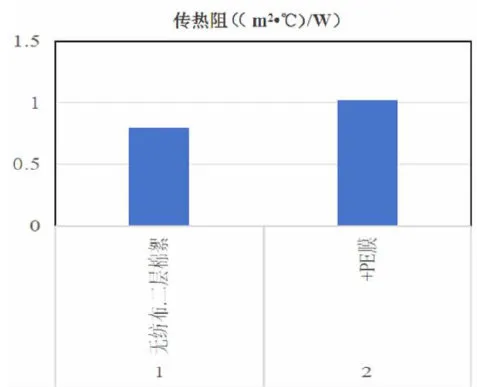 图9 中间2层棉絮保温被传热阻 Fig. 9 Heattransferresistanceof heatpreservationquilt
图9 中间2层棉絮保温被传热阻 Fig. 9 Heattransferresistanceof heatpreservationquilt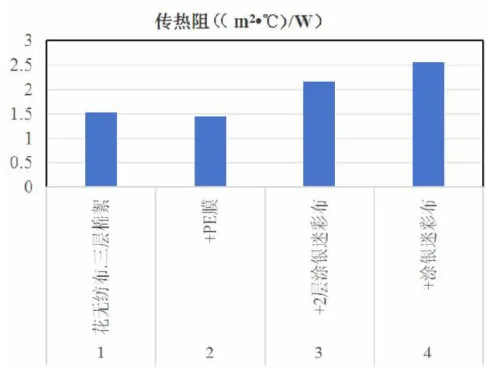 图10 中间3棉絮保温被传热阻 Fig. 10 Heattransferresistanceof heat preservation quilt
图10 中间3棉絮保温被传热阻 Fig. 10 Heattransferresistanceof heat preservation quilt 表5 中间棉絮保温被测试Tab.5 Testingresultsofheat preservation quilt
表5 中间棉絮保温被测试Tab.5 Testingresultsofheat preservation quilt 表6中间三层棉絮保温被测试Tab.6 Testingresultsofheatpreservation quilt
表6中间三层棉絮保温被测试Tab.6 Testingresultsofheatpreservation quilt2.1.7 中间是夹心棉保温被测试
研究表明,中间材料为夹心棉、外层材料是无 纺布的保温被,传热阻均在 0 . 9 ~ 1 . 8  W左右。增加PE膜外层材料,传热阻增加,均达 到1左右,保温性能增加。增加银迷彩布外层材 料,传热阻大幅度增加,保温性能特别好。此保温 被是首选,成本增加不多,保温性能大幅增加。中 间材料为夹心棉、外层材料是无纺布的保温被重 量约在
W左右。增加PE膜外层材料,传热阻增加,均达 到1左右,保温性能增加。增加银迷彩布外层材 料,传热阻大幅度增加,保温性能特别好。此保温 被是首选,成本增加不多,保温性能大幅增加。中 间材料为夹心棉、外层材料是无纺布的保温被重 量约在  。表7,图11
。表7,图11
2.1.8 中间是毛网卷保温被测试
研究表明,中间材料为毛网卷、外层材料是无纺布的保温被,传热阻在 1 . 1 ~ 2 . 6 (  W,增加PE膜外层材料,传热阻几乎不变。增加镀铝编织布外层材料传热阻增大,保温性能增加。增加1层银迷彩布外层材料,传热阻也增加,保温性能明显增加。增加2层银迷彩布外层材料,传热阻大幅度增加,保温性能跳跃性增加,达到最佳。
W,增加PE膜外层材料,传热阻几乎不变。增加镀铝编织布外层材料传热阻增大,保温性能增加。增加1层银迷彩布外层材料,传热阻也增加,保温性能明显增加。增加2层银迷彩布外层材料,传热阻大幅度增加,保温性能跳跃性增加,达到最佳。
选用中间材料为毛网卷的保温被时,用增加 1层银迷彩布外层材料的保温被,成本增加不多, 保温性能显著增加。中间材料为毛网卷的保温被 重量约在  ,保温被比较重。表8,图12
,保温被比较重。表8,图12
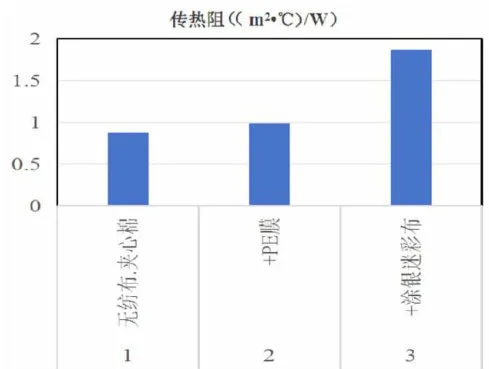 图11 中间夹心棉保温被传热阻 Fig.11Heat transfer resistance of heatpreservationquilt
图11 中间夹心棉保温被传热阻 Fig.11Heat transfer resistance of heatpreservationquilt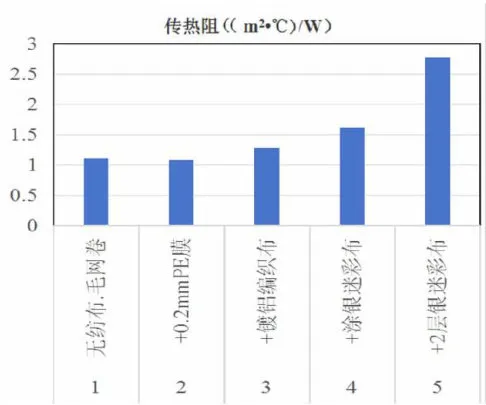 图12 中间毛网卷保温被传热阻 Fig.12 Heattransferresistanceof heatpreservationquilt
图12 中间毛网卷保温被传热阻 Fig.12 Heattransferresistanceof heatpreservationquilt 表7中间夹心棉保温被测试Tab.7 Testingresultsofheatpreservation quilt
表7中间夹心棉保温被测试Tab.7 Testingresultsofheatpreservation quilt 表8中间毛网卷保温被测试Tab.8 Testingresultsofheatpreservation quilt
表8中间毛网卷保温被测试Tab.8 Testingresultsofheatpreservation quilt2.26类中间材料保温被传热系数和传热阻 对比
研究表明,选取上表1\~6共6类外层材料均是无纺布、中间材料不同的保温被,对传热系数和传热阻进行对比。
保温被外层材料均是无纺布时,保温被中间 材料,棉絮的保温性最好,保温棉和毛网卷次之, 夹心棉、珍珠棉和布头棉最差,相差不大。
随着保温被材料层数的增加,传热阻越大。一般保温被传热阻的区间范围较大,在0.8~1.5 。
。
保温被材料层数越多,质量也越大,同时成本也增加。中间材料为3层棉絮的保温被重量最大,达到  。其他中间材料的保温被质量在
。其他中间材料的保温被质量在  。中间材料为3层棉絮的保温被虽然保温性最佳,但是重量太大,会给前屋面钢骨架增加载荷,因此在选择时,需要慎重。中间材料为珍珠棉的保温被重量很轻,对骨架载荷小,是优点,但是容易被风吹起,只适合用做温室内置保温被。毛网卷、夹心棉、布头棉和保温棉重量适中,适合选用。保温棉和毛网卷是适合新疆性价比和安全性的保温被中间材料。
。中间材料为3层棉絮的保温被虽然保温性最佳,但是重量太大,会给前屋面钢骨架增加载荷,因此在选择时,需要慎重。中间材料为珍珠棉的保温被重量很轻,对骨架载荷小,是优点,但是容易被风吹起,只适合用做温室内置保温被。毛网卷、夹心棉、布头棉和保温棉重量适中,适合选用。保温棉和毛网卷是适合新疆性价比和安全性的保温被中间材料。
新疆北部冬季降雪较多,在选择保温被时,同时需要考虑积雪水分对保温被保温性能、载荷等的影响。表9,图13
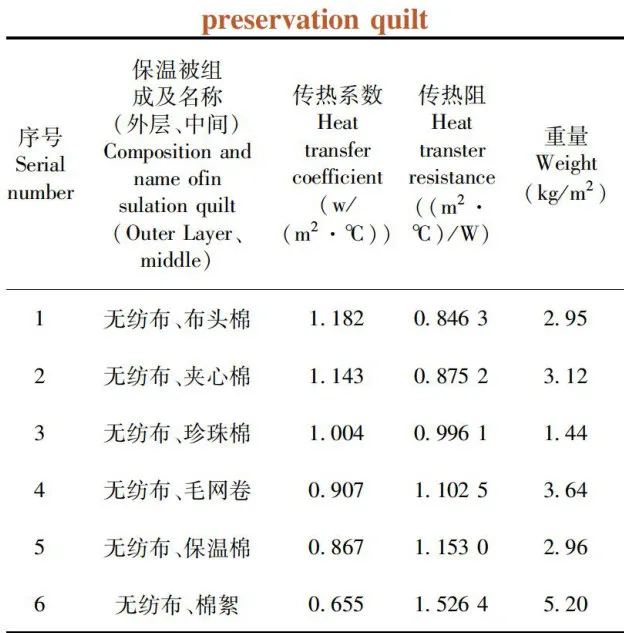 表9 保温被测试Tab.9 Testing results of heat
表9 保温被测试Tab.9 Testing results of heat3讨论
3.1保温被产品的界定比较含糊[19]。采用新疆 地方标准DB65/T3640-2014日光温室保温被, 兼顾新疆日光温室具体应用实际,热箱的温度借 鉴设施农业日光温室的常规现状,冷箱的温度就 模拟新疆冬天日光温室室外温度数据,确定保温 被传热系数的测试控制参数。与马承伟等[2日 光温室保温被材料及保温性能评价,分析的保温 材料不同。姜鲁艳等[21]日光温室保温被同层材 料的性能对比分析及选型,测试和分析的方法不 同。覆盖材料测试台按照国家行业标准设定测试 参数[22和《NY/T1831-2009 温室覆盖材料保温 性能测定方法》[23]。中间材料为珍珠棉、外层材 料是无纺布的保温被,传热阻在1左右,保温性能 较好,同时保温被较轻;中间材料为布头棉、外层 材料是无纺布的保温被,传热阻在0.9(  ∇⋅ C) / W 左右,重量较重。保温性能可以;中间 材料为保温棉、外层材料是防水材料的保温被,传 热阻在1.15
∇⋅ C) / W 左右,重量较重。保温性能可以;中间 材料为保温棉、外层材料是防水材料的保温被,传 热阻在1.15  左右,兼顾经济性和适 用性,选择防水材料 + 无纺布 + 保温棉即可。保 温性能较好;中间材料为夹心棉、外层材料是珍珠 棉的保温被,传热阻在0.9
左右,兼顾经济性和适 用性,选择防水材料 + 无纺布 + 保温棉即可。保 温性能较好;中间材料为夹心棉、外层材料是珍珠 棉的保温被,传热阻在0.9  左右,选 用镀铝编织布外层材料,成本增加,保温性能增加 显著;中间材料为两层棉絮、外层材料是无纺布的 保温被,传热阻在0.9
左右,选 用镀铝编织布外层材料,成本增加,保温性能增加 显著;中间材料为两层棉絮、外层材料是无纺布的 保温被,传热阻在0.9  左右,采用 PE 膜外层材料,成本增加很少,保温性能增加显 著,适用;中间材料为三层棉絮、外层材料是无纺 布的保温被,传热阻在1.5\~2.3
左右,采用 PE 膜外层材料,成本增加很少,保温性能增加显 著,适用;中间材料为三层棉絮、外层材料是无纺 布的保温被,传热阻在1.5\~2.3  左 右,增加1层银迷彩布外层材料,保温性大幅增 加,成本增加不多;中间材料为夹心棉、外层材料 是无纺布的保温被,传热阻在 0 . 9 ~ 1 . 8 (
左 右,增加1层银迷彩布外层材料,保温性大幅增 加,成本增加不多;中间材料为夹心棉、外层材料 是无纺布的保温被,传热阻在 0 . 9 ~ 1 . 8 (  ·C) / W 左右,增加银迷彩布外层材料,传热系 数显著减小,成本增加不多,保温性能大幅增加, 适用;中间材料为毛网卷、外层材料是无纺布的保 温被时,传热阻在
·C) / W 左右,增加银迷彩布外层材料,传热系 数显著减小,成本增加不多,保温性能大幅增加, 适用;中间材料为毛网卷、外层材料是无纺布的保 温被时,传热阻在  (
(  左右, 用增加1层银迷彩布外层材料的保温被,成本增 加不多,保温性能显著增加。
左右, 用增加1层银迷彩布外层材料的保温被,成本增 加不多,保温性能显著增加。
3.2常用的外层材料是无纺布、珍珠棉、迷彩布等防水材料,中间材料是珍珠棉、布头棉、保温棉、夹心棉、棉絮不同材料的20多种保温被,传热系数均在  、传热阻均在0.9
、传热阻均在0.9 以上,保温性能较好、重量一般,比较实用。选用时,可以兼顾经济性。新疆存在融雪问题,首选外层材料是防水材料的保温被;优选外层材料无纺布,中间材料珍珠棉的保温被;接着选外层材料是无纺布、中间材料夹心棉的保温被;中间材料是3层棉絮和毛网卷的保温被重量太大,载荷大,不适合。保温被外层材料均是无纺布时,保温被中间材料,棉絮载荷太大,保温棉和毛网卷保温性好,优选。
以上,保温性能较好、重量一般,比较实用。选用时,可以兼顾经济性。新疆存在融雪问题,首选外层材料是防水材料的保温被;优选外层材料无纺布,中间材料珍珠棉的保温被;接着选外层材料是无纺布、中间材料夹心棉的保温被;中间材料是3层棉絮和毛网卷的保温被重量太大,载荷大,不适合。保温被外层材料均是无纺布时,保温被中间材料,棉絮载荷太大,保温棉和毛网卷保温性好,优选。
4结论
常用的8种30个内、中间、外层材料保温被, 压重厚度、重量、传热系数和传热阻测试和分析得 到:首选外层材料是防水材料、中间材料为保温棉 的保温被;优选外层材料无纺布,中间材料珍珠棉 的保温被;接着选外层材料是无纺布、中间材料夹 心棉的保温被。当保温被外层材料均是无纺布 时,保温被中间材料选保温棉和毛网卷,保温性能 好,载荷较小,且防风性能好。选用保温被需要兼 顾保温、载荷、防风性能和成本多个因素。
参考文献(References)
[1]NaharNM,MarshallRH,BrinkworthBJ.Investigationsofflat platecollectors using transparent insulation materials[J]. InternationalJournalofSolarEnergy,1995,17(2/3):117-134.
[2]张滴滴.日光温室排管式相变储放热系统的构建与性能[D]. 北京:中国农业大学,2019. ZHANG Didi. Construction and Application of Tubular Phase - ChangeStorageand Heat Release Systemin SolarGreenhouse[D]. Beijing:China Agricultural University,2019.
[3]王伟,张京社,王引斌.我国日光温室墙体结构及性能研究 进展[J].山西农业科学,2015,43(4):496-498,504. WANGWei,ZHANGJingshe,WANGYinbin.The research progress on the structure and the properties of solar greenhouse wallsin China[J].Journal of Shanxi Agricultural Sciences, 2015,43(4):496-498,504.
[4]马承伟,苗香雯.农业生物环境工程[M].北京:中国农业 出版社,2005. MAChengwei,MIAO Xiangwen. Agricultural bio-environmental engineering[M]. Beijing:China Agriculture Press,2005.
[5]刘峰.冬季日光温室的保温性能试验研究[D].长春:吉林 大学,2009. LIU Feng. Experimental study on thermal insulation performance ofsolargreenhouseinwinter[D].Changchun:Jilin University, 2009.
[6]马承伟,丁小明,张义,王平智,邓健,滕光辉.日光温室覆盖材 料保温性能测定方法研究与标准制定[A].中国农业科学院、 山东省寿光市人民政府.设施园艺研究新进展—2009 中国·寿光国际设施园艺高层学术论坛论文集,2009:8. MA Chengwei,DING Xiaoming,ZHANG Yi,Study on the measurementmethodofthermal insulationperformanceofsolargreenhouse covering materials and formulation of the standard[A]. Chinese Academyof Agricultural Sciences—2009China- houguang International Facility Horticulture Forum,2009:8.
[7]杨仁权,吴松.新型节能日光温室的设计[J].农业机械, 2002,(3):30 -33. YANG Renquan,WU Song.A new design of energy-saving sunlight greenhouse[J].Farm Machinery,2002,(3):30-33.
[8]覃密道,马承伟,刘瑞春.热箱法测定园艺设施覆盖材料传 热系数的研究进展[J].农业工程学报,2005,21(2):183- 186. QIN Midao,MA Chengwei,LIU Ruichun.Review of the hot - box methods for measuring the thermal transmittance of greenhouse covering materials[J]. Transactions of the Chinese Society of Agricultural Engineering,2005,21(2):183-186.
[9]Papadakis G,Briassoulis D,Scarascia Mugnozza G,et al.Review paper(SE—structures and environment)[J].Journal of Agricultural Engineering Research,2000, 7 7 ( 1 ) : 7 - 3 8
[10]王吉庆,赵月平,张百良.日光温室采用多层内覆盖保温节能 效果研究,农业工程学报,2005,21(8):118\~121. WANG Jiqin ,ZHAO Yueping,ZHANG Bailiang. Study on energy - saving efect of multi- layer heat preservation in solar greenhouse2005,21(8) :118\~121.
[11]Ozturk HH. Experimental determination of the overall heat los coefficient for energy requirement of greenhouse heating[J].International Journal of Energy Research,2005,29(10):937- 944.
[12]Abdel-Ghany A M,Kozai T.On the determination of the overall heat transmission coefficient and soil heat flux for a fog cooled, naturally ventilated greenhouse:analysis of radiation and convection heat transfer[J]. Energy Conversion and Management, 2006,47(15/16): 2612-2628.
[13]GeoolaF,KashtiY,LeviA,etal.Astudyoftheoverallheat transfer coefficient of greenhouse cladding materials with thermal screens using the hot box method[J].Polymer Testing,2009,28 (5) : 470 -474.
[14] Teitel M , Barak M,Anter A.Eectof cyclicheating and a thermal screen on the nocturnal heat loss and microclimate of a greenhouse[J].Biosystems Enginering,2009,102(2):162- 170. 试验性能测试[J].西北农林科技大学学报(自然科学版), 2008,36(6):153-158. QIAO Zhengwei, ZOU Zhirong, ZHANG Liming,et al. Laboratorytestoffour kinds of heatpreservation quilts for solar greenhouse[J]. Journal of Northwest Aamp; F University(Natural Science Edition),2008,36(6):153-158.
[16]Feuilloley P,Issanchou G.Greenhouse covering materials measurement and modelling of thermal propertiesusing the hot box method,and condensation effcts[J]. Journal of Agricultural Engineering Research,1996,65(2):129-142.
[17]周景德,管康雄.绝热材料及其构件绝热性能测试方法回顾 [J].房材与应用,2001,29(1):8-11,24. ZHOU Jingde,GUAN Kangxiong. Review of test methods for thermal insulation properties of thermal insulation materials and their components[J]. Housing Materials amp; Applications,2001, 29(1):8-11,24.
[18]MA Chengwei,DING Xiaoming,ZHANG Yi,tudy on the measurement method of thermal insulation performance of solar greenhousecoveringmaterialsand formulation of thestandard,2016, (6) :57\~64
[19]李嘉怡,马久明,黎天标,秦红.日光温室保温被的研究进展, 广东材料发展论坛-战略性新兴产业发展与新材料科技创新 研讨会论文集[C].2013. LI Jiayi,MA Jiuming,LITianbiao,. Research progress of thermal insulation quiltin solar greenhouseGuangdong Materials Development Forum-Proceedings of the symposium on the development of strategic emerging industries and scientific and technological innovation of new materials[C].2013.
[20]马承伟,王平智,赵淑梅,等.日光温室保温被材料及保温 性能评价[J].农业工程技术,2018,38(31):11-16. MA Chengwei,WANG Pingzhi,ZHAO Shumei,et al. Evaluation of thermal insulation materials and thermal insulation performance in solar greenhouse[J]. Agricultural Engineering Technology,2018,38(31):11-16.
[21]姜鲁艳,张彩虹,邹平.日光温室保温被同层材料的性能 对比分析及选型[J].农业工程技术,2021,41(7):48-51. JIANG Luyan,ZHANG Caihong,ZOU Ping. Performance comparative analysis and selection of insulation quilt materials in solar greenhouse[J].Agricultural Engineering Technology,2021,41 (7):48-51.
[22]姜鲁艳,马艳,吐尔逊娜依·热依木江,等.几种温室覆盖 材料的保温性能测试与分析[J].中国农机化学报,2015,36 (1): 119 -123. JIANG Luyan,MA Yan, Tuerxunnayi Reyimujiang,et al.Testingandanalysisof several heat preservation propertyof greenhouse covering materials[J]. Journal of Chinese Agricultural Mechanization,2015,36(1):119-123.
[23]NY/T1831—2009.温室覆盖材料保温性能测定方法[S]. NY/T1831—2009. Test method for thermal insulation performance of greenhouse covering materials[S].
Experimental analysisofthermal insulation material of solar greenhouses in Xinjiang
MA Yuehong1,LI Baoming²,WANG Pingzhi²
(1. Institute of Agricultural Mechanization, Xinjiang Academy of Agricultural Sciences, Urumqi 830091, China; 2. College of Water Resources and Civil Engineering, China Agricultural University, Beijing 100083, China)
Abstract:【Objective】This project aims to clarify the basis for selecting the heat -retaining quilt material and choosing the heat-retainingquilt ofevery layer material suitable for thecost performanceand safety of the greenhouse.The finding from research has provided a reasonable basis and reference for the design,selection,operation and maintenance of heat -retaining materials for the greenhouse.【Methods】 The heat -retaining characteristics of the heat-retaining quilt were indicatedby heat transfer coefcient,which was measured byusing a static hot box test method.Under the status ofone-dimensional stable heat transfer,the air temperature differences on both sides of the cover material specimen and the heat flow rate through the part were measured,and then the heat transfer coeficient and heat transfer resistance of the cover material and other parameters related to heat-retaining performance were calculated by the heat flow rate.【Results】The more heat -retaining material in front of the greenhouse,the more heat transfer resistance,the smaller the heat transfer coefficient,and the bettr heat -retaining performance.Generally speaking,the heat transfer resistance was between 0 . 8 to 2 . 7  . When selecting heat -retaining quilts,the main considerations were heat transfer resistance.The preferred outer material was waterproof material,the intermediate layer material was insulation coton insulation quilt.Preferred outer material was non -woven fabric,intermediate layer material was pearl coton,sandwich cotton insulation quilt. When the outer layer of insulation material was non-woven,the intermediate layer material in the quilt was to choose insulation coton and wool mesh.【Conclusion】 The outerlayer material is waterproof material,,the intermediate material is thermal insulationcotton insulation is suitable for Xinjiang solar greenhouse because of the good cost performance and safety.
. When selecting heat -retaining quilts,the main considerations were heat transfer resistance.The preferred outer material was waterproof material,the intermediate layer material was insulation coton insulation quilt.Preferred outer material was non -woven fabric,intermediate layer material was pearl coton,sandwich cotton insulation quilt. When the outer layer of insulation material was non-woven,the intermediate layer material in the quilt was to choose insulation coton and wool mesh.【Conclusion】 The outerlayer material is waterproof material,,the intermediate material is thermal insulationcotton insulation is suitable for Xinjiang solar greenhouse because of the good cost performance and safety.
Key words:sunlight greenhouse;insulation material;heat transfer coefficient




